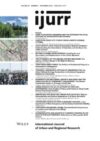Integrating urban land use policies with food systems is becoming a widespread global strategy to build resilient socio-ecological systems and address the challenges of climate change and rapid urbanization. Yet varying degrees of integration have raised questions about its efficacy and hindered broader adoption. This article introduces a multi-structured what-why-how framework to evaluate the elements of Australian food systems amenable to integration, addressing three key dimensions: (1) what has already been integrated and why; (2) what new elements can be integrated and why; and (3) how to integrate effectively. Interviews with 25 senior planning professionals and policymakers across Queensland, Victoria and Western Australia reveal limited integration, with agricultural lands and urban food retail perceived as integrated, primarily through established planning policies. While integrating new elements is possible, implementation is often constrained by external factors, such as market pressures, land scarcity and stakeholder conflicts. However, internal drivers—including policy shifts, intellectual development, better institutional decision-making and governance structures—offer promising avenues. These findings underscore the complexity of food policy integration across historical, external and internal dimensions, highlighting the value of the multi-structured what-why-how framework in advancing theory and providing actionable tools for urban and regional land use planning.
Details
Written by:
Lijun Summerhayes, Douglas Baker
Digital Object Identifier (DOI)
https://doi.org/10.1111/1468-2427.70026
About DOI
